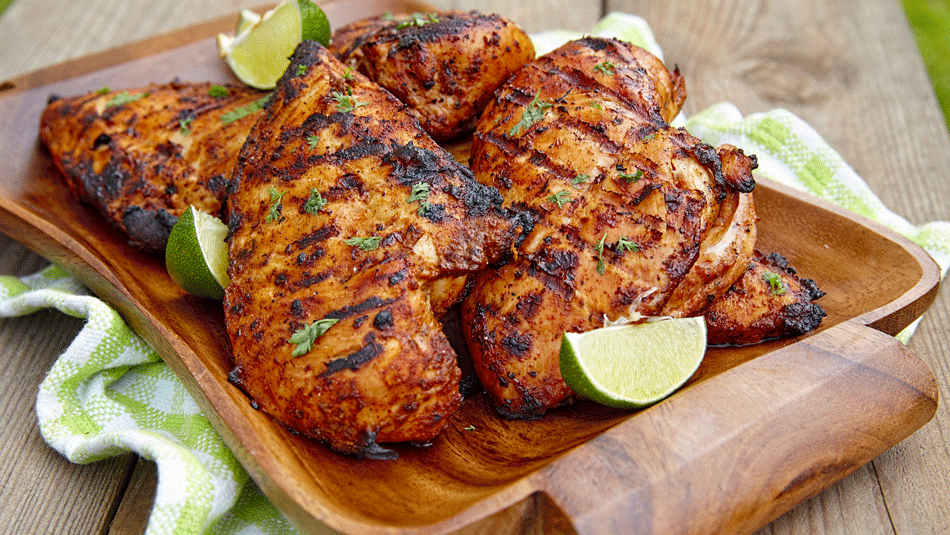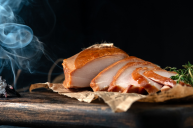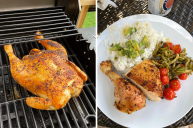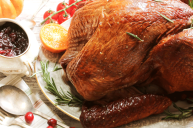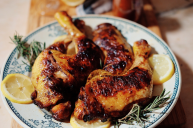Would it surprise you to know that "chicken breast recipes" is one of the most searched queries on Google? I was taken aback when I learned that, but actually it makes sense. As commonplace as they are, it's really difficult to pull off tender, juicy chicken breasts!
Videos by Wide Open Country
It shouldn't be that way. Chicken is one of the most affordable and easily accessible proteins available at the grocery store. Not only that, but boneless skinless chicken breasts are easy to prepare. You don't need to do a lot of trimming because the cut is so lean with very little fat, and the flavor of the chicken makes it versatile. It's easy to turn chicken into sandwiches, pasta, tacos, or served on top of a nice bed of polenta.
The leanness of the chicken makes it healthy for us, but it's also one of the reasons that it is so difficult to cook. Lean meats tend to dry out quickly, so even the slightest overcooking results in a flavorless puck. Cook it over too high heat, it'll char on the outside before cooking through in the middle.
Unlike beef or lamb, undercooking chicken is very dangerous: if it doesn't reach the correct internal temperature, you run the risk of exposing your dinner guests to Salmonella.
To celebrate the amazing flavor of juicy chicken breasts, we put together a few tips, and tricks so you can say goodbye to dry chicken and hello to flavorful baked chicken breasts! Read through our list so you can make the best chicken recipes the whole family will love.
Before You Even Start Cooking
Unlike chicken thighs, chicken breasts are very lean, so they dry out easily. By following a few easy steps, you can prevent your chicken from drying out before you even hit the oven, increasing your chances of producing a moist chicken breast for any delicious recipe.
Brines
Brines are a foolproof way to ensure juicy chicken breasts every time. The salt-water brine pulls out excess moisture from the chicken, replacing it with salt and reshaping the proteins. This helps it retain moisture more efficiently as you cook it.
Our favorite brine is a quick brine, so you benefit from all the juicy goodness without adding too much salty flavor. In a large bowl, dissolve 1/4 cup kosher salt into 4 cups water. After 30 minutes, your chicken will have that little bit of extra protection in case you slightly overcook it.
All you need is salt and water, but feel free to spruce up your brine with flavorings like honey, garlic, lemon, or herbs like oregano and parsley. If you are brining overnight, reduce the amount of salt significantly (to 3 tablespoons in 4 cups of water) to prevent the chicken from being too salty.
Marinades
[embed_recipe id='13524']
A marinade not only adds flavoring to sometimes bland chicken, but it also softens the meat's texture. The acidic ingredients in the marinade (such as balsamic vinegar or lemon juice) will tenderize the proteins and create a moist chicken breast, while the oil (such as olive oil) will add some extra fat to keep the chicken from drying out.
In general, you only need about two hours for the marinade to do its work. Place the chicken in a baking dish or large Ziploc bag in the marinade overnight, or for up to two days, but longer than that will cause the meat to toughen. To your marinade, add your acidic ingredients, olive oil, and preferred spices like paprika, garlic powder, onion powder, and black pepper. Fresh herbs are also a nice addition to the marinade.
Make Them Thinner
https://www.instagram.com/p/BUdPbh9B-55/
Turn your boneless chicken breasts into chicken cutlets by slicing them in half! When you cut the chicken in half (a process called butterflying), you even out the thickness of the chicken breast. This not only helps the chicken cook evenly, but it also reduces the cooking time.
Once they're butterflied, you can cook them like normal or you can stuff them with flavorings (like spinach, garlic, and feta cheese) for weeknight stuffed chicken. Roll them up, tie them off with butchers twine, and cook them in a casserole dish.
If you don't feel comfortable butterflying the chicken, you can also pound it out using a meat mallet or a heavy-bottomed pot. They won't be quite as thin, but the end result will basically be the same.
[embed_recipe id='13682']
Let's Get Cooking
Now that we're set up for success, let's get cooking. By following a few simple rules, you'll be cooking chicken like a pro in no time!
Cooking Temperature
It's important to have the right cooking temperature. I like an oven between 325 and 350 degrees. This medium-high heat ensures that the chicken will cook through inside without getting too crispy on the outside.
Another important factor is the chicken's internal temperature. The FDA's approved cooking temperature for chicken breasts is 165 degrees F. This ensures that any risk of Salmonella has been eliminated. To hit the exact temperature every time, insert a remote meat thermometer into the thickest part of the chicken breast.
[embed_recipe id='12469']
If you pull the chicken at 160 degrees F, it will rise the additional 5 degrees as it rests. Most chefs agree that the juiciest, most flavorful chicken breasts result from a final temperature of 155 degrees F.
This tender chicken is fully cooked and no longer pink. However, if you are cooking for anyone with sensitive immune systems or just like following the rules, we recommend you use the FDA's temperatures.
Let That Chicken Rest
The resting phase is one of the most important pieces of the chicken cooking puzzle. Let the chicken rest, covered with aluminum foil, for at least 5 minutes before cutting into it. This will allow the juices to redistribute within the meat instead of spilling out onto your cutting board.
If you follow these tips and tricks, you'll find yourself with the best oven baked chicken breasts on the block.
This post was originally published on June 14, 2017.
